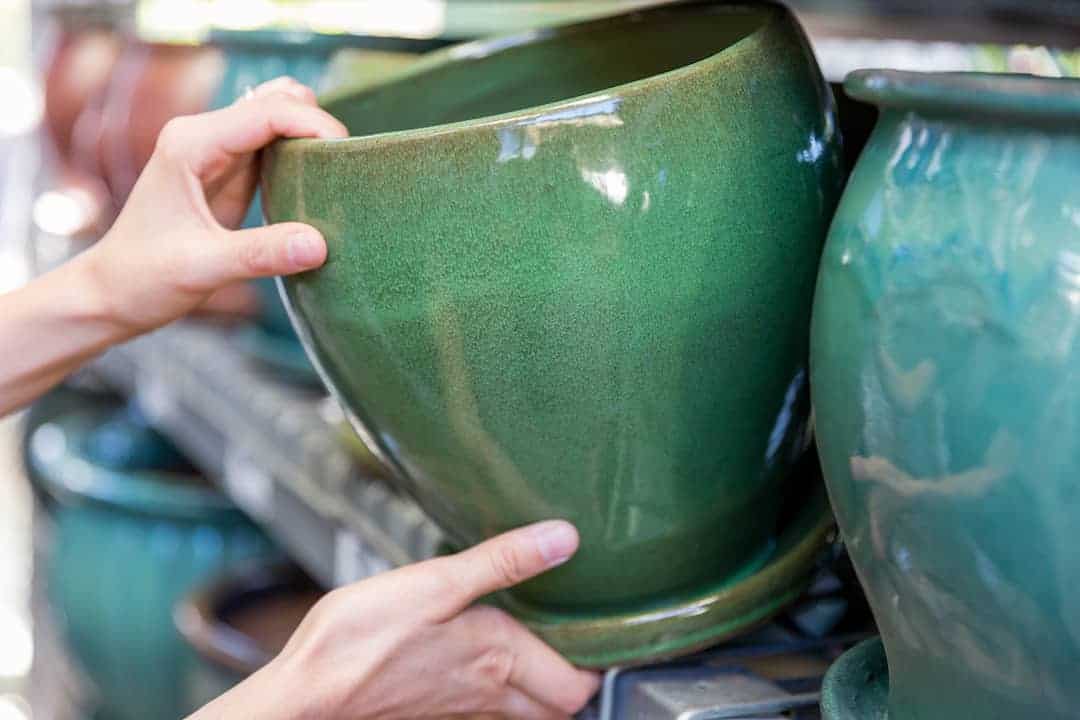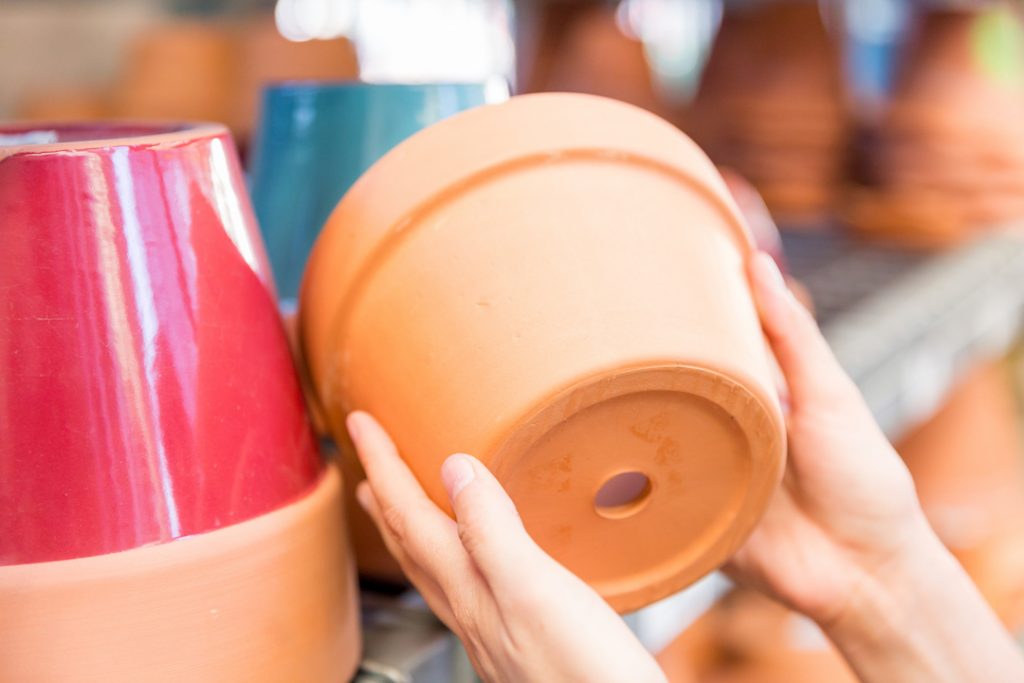
Currently on the market, “plant pots” are richly designed, shown through eye-catching designs, suitable sizes with many different colors. Gardeners will have more options when considering growing outdoor or indoor plants to enhance the living space. Selecting the size of the pot is considered the most time consuming step, because it requires you to understand the purpose and the type of plant you want to plant.
This article will share experiences in choosing beautiful pots as well as the most effective pot placement to help you get more experience in choosing bonsai pots.

Material of the pot
One of the most important steps in marking the growth of a plant is choosing the ingredients for your pot. Plant pots are diversified based on different ingredients. Consider the following ingredients, but be sure to design the pot to provide ventilation to aid the drainage.
Terracotta:
Terracotta is known as a traditional material for potted plants. Users tend to choose to buy pots with a small size, because large sizes are usually quite expensive and heavier. This pot has a high water permeability and evaporation capacity, making it an ideal choice for indoor greens and Mediterranean herbs like rosemary and basil. Enameled terracotta is not very aesthetically pleasing because the pot will get dirty or cracked during use.
Plastic:
Plastic is known for its durability, lightness and affordable price. Often times, choosing bright colors will bring life to the plant, or the traditional color of terracotta is also a good idea. If you are looking for ingredients for outdoor greenery, avoid black as the dark shade will harm root growth. Consider alternative plastic containers, like buckets, crates, or buckets.
The wood:
Wooden pots bring natural features when combined with the lively space in your garden. Wood is durable and weatherproof, not broken or cracked over time. The wooden pots get heavier when they are filled with soil, so it’s a good idea to arrange them in place before starting the planting process. Wooden pots are often very suitable for outdoor greenery.
Ceramics:
The advantages of ceramics are durable and exquisitely designed. But porcelain pots are often seldom chosen because they are expensive and slow to drain. Perfect for all types of indoor plants.
Concrete:
At the forefront of durability, concrete is the perfect choice for outdoor plants in large areas. However, they are quite heavy and cost quite a bit.
Material of the pot
One of the most important steps in marking the growth of a plant is choosing the ingredients for your pot. Plant pots are diversified based on different ingredients. Consider the following ingredients, but be sure to design the pot to provide ventilation to aid the drainage.
Terracotta:
Terracotta is known as a traditional material for potted plants. Users tend to choose to buy pots with a small size, because large sizes are usually quite expensive and heavier. This pot has a high water permeability and evaporation capacity, making it an ideal choice for indoor greens and Mediterranean herbs like rosemary and basil. Enameled terracotta is not very aesthetically pleasing because the pot will get dirty or cracked during use.
Plastic:
Plastic is known for its durability, lightness and affordable price. Often times, choosing bright colors will bring life to the plant, or the traditional color of terracotta is also a good idea. If you are looking for ingredients for outdoor greenery, avoid black as the dark shade will harm root growth. Consider alternative plastic containers, like buckets, crates, or buckets.
The wood:
Wooden pots bring natural features when combined with the lively space in your garden. Wood is durable and weatherproof, not broken or cracked over time. The wooden pots get heavier when they are filled with soil, so it’s a good idea to arrange them in place before starting the planting process. Wooden pots are often very suitable for outdoor greenery.
Ceramics:
The advantages of ceramics are durable and exquisitely designed. But porcelain pots are often seldom chosen because they are expensive and slow to drain. Perfect for all types of indoor plants.
Concrete:
At the forefront of durability, concrete is the perfect choice for outdoor plants in large areas. However, they are quite heavy and cost quite a bit.

